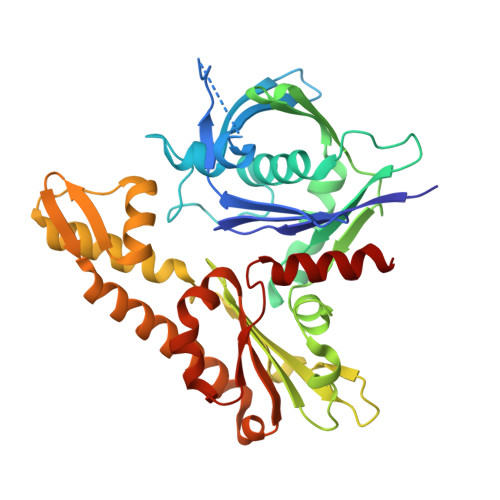The structure of a 15-stranded actin-like filament from Clostridium botulinum.
Koh, F., Narita, A., Lee, L.J., Tanaka, K., Tan, Y.Z., Dandey, V.P., Popp, D., Robinson, R.C.(2019) Nat Commun 10: 2856-2856
- PubMed: 31253774
- DOI: https://doi.org/10.1038/s41467-019-10779-9
- Primary Citation of Related Structures:
6IXW, 6IZR, 6IZV - PubMed Abstract:
Microfilaments (actin) and microtubules represent the extremes in eukaryotic cytoskeleton cross-sectional dimensions, raising the question of whether filament architectures are limited by protein fold. Here, we report the cryoelectron microscopy structure of a complex filament formed from 15 protofilaments of an actin-like protein. This actin-like ParM is encoded on the large pCBH Clostridium botulinum plasmid. In cross-section, the ~26 nm diameter filament comprises a central helical protofilament surrounded by intermediate and outer layers of six and eight twisted protofilaments, respectively. Alternating polarity of the layers allows for similar lateral contacts between each layer. This filament design is stiffer than the actin filament, and has likely been selected for during evolution to move large cargos. The comparable sizes of microtubule and pCBH ParM filaments indicate that larger filament architectures are not limited by the protomer fold. Instead, function appears to have been the evolutionary driving force to produce broad, complex filaments.
Organizational Affiliation:
Institute of Molecular and Cell Biology, A*STAR (Agency for Science, Technology and Research), Biopolis, Singapore, 138673, Singapore.
















